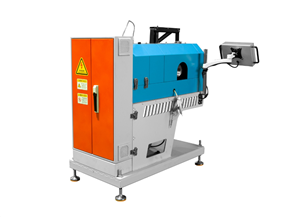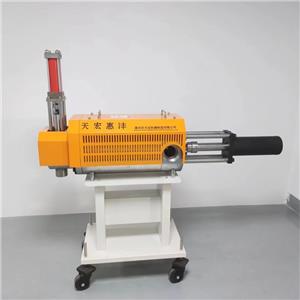Biaxially Oriented Film: A New Favorite Material with Excellent Performance(1)
In the vast field of materials science, biaxially oriented films have become the focus of attention in many industries due to their unique properties and wide range of applications. This type of film, manufactured through specific processes, demonstrates significant advantages in mechanical properties, barrier properties, optical properties, etc., providing strong support for the development of modern industry.

Biaxial Stretching: Principles and Advantages
Biaxial stretching technology stands out among plastic film forming methods, with its basic principle as follows: The polymer raw material is heated and melted by an extruder, and extruded into a thick sheet. Subsequently, within the suitable temperature range above the glass transition temperature and below the melting point (i.e., in the high elastic state), using a longitudinal stretching machine and a transverse stretching machine, external forces are applied sequentially in the longitudinal and transverse directions for stretching operations by a certain multiple. This process promotes the orientation and orderly arrangement of molecular chains or crystal planes in the direction parallel to the film plane. Immediately after, heat setting treatment is carried out in a tensioned state to fix the oriented macromolecular structure. Finally, through cooling and subsequent processing, the biaxially oriented film is prepared.
Compared with unstretched films, biaxially oriented films show significantly improved mechanical properties, with tensile strength reaching 3-5 times that of unstretched films. Meanwhile, their barrier properties are enhanced, reducing the permeability to gases and water vapor; optical properties are optimized, with significantly improved transparency and surface gloss; heat and cold resistance are improved, and dimensional stability is good; thickness uniformity is better, with smaller thickness deviation, and high automation and high-speed production can be achieved.
Production Process: A Complex and Precise Flow
The production line for biaxially oriented films is like a precise industrial dragon, composed of various equipment forming a continuous production line, mainly including drying towers, extruders, casting machines, longitudinal stretching machines, transverse stretching machines, traction winding machines, etc.
Taking the production of polyester film as an example, the first step is ingredient preparation and mixing. A certain amount of silicon-containing masterbatch chips and bright chips are used in combination. After being mixed by a metering mixer, they enter the next process. The silica particles in the silicon-containing masterbatch chips are distributed in the film, which can increase the microscopic roughness of the film surface, allowing a small amount of air to be retained between the films during winding, effectively preventing adhesion.
For hygroscopic polymers such as PET, PA, and PC, pre-crystallization and drying treatments are mandatory before biaxial stretching. PET typically undergoes processing in a packed tower with a crystallization bed, equipped with dry air preparation devices including an air compressor, molecular sieve dehumidifier, and heater. Pre-crystallization and drying are conducted at 150–170°C for approximately 3.5–4 hours, ensuring the moisture content of dried PET chips is controlled at 30–50 ppm. This step enhances the polymer softening point, prevents resin particles from sticking or agglomerating during drying and melt extrusion, while removing moisture to avoid hydrolysis or bubble formation in ester-based polymers during melt extrusion.
The PET chips that have undergone crystallization and drying treatment enter a single-screw extruder, where they are heated, melted, and plasticized under the action of the screw's unique structure. To ensure the plasticization quality and stable extruded melt pressure, the extruder is equipped with two exhaust ports connected to a vacuum pumping system, which can effectively extract moisture and oligomers from the materials, eliminating the need for a complex pre-crystallization/drying system and reducing investment and operating costs. Melt metering is completed by a high-precision gear pump, which provides stable pressure to the die, overcomes the resistance of the melt passing through the filter, and ensures uniform film thickness. The melt pipe connects the extruder, metering pump, filter, and die to allow the melt to flow smoothly. Inside the end of the melt pipe connected to the die, multiple sets of static mixers are installed. When the melt flows through, it automatically produces a mixing effect of division-combination-division-combination, achieving temperature homogenization of the melt.
The viscoelastic PET melt exiting the die is rapidly cooled below the glass transition temperature on a uniformly rotating chill roll, forming a glassy cast sheet with uniform thickness. The principle involves using a high-voltage generator to produce a DC voltage of several thousand volts, making the electrode wire and chill roll act as the negative and positive poles respectively (with the chill roll grounded). In the high-voltage electrostatic field, the cast sheet acquires static charges opposite to the chill roll's polarity through electrostatic induction. Due to the attraction between opposite charges, the sheet adheres tightly to the chill roll surface, effectively expelling air and enabling efficient heat transfer.
The thick sheet produced by the casting machine enters the longitudinal stretching unit for longitudinal stretching in the high elastic state. The longitudinal stretching machine is composed of preheating rollers, stretching rollers, cooling rollers, tension rollers, rubber pressure rollers, infrared heating tubes, heating units, and driving devices. There are various modes of longitudinal stretching, commonly including single-point stretching, as well as multi-point stretching such as two-point or three-point stretching.
The film after longitudinal stretching enters the transverse stretcher, going through preheating, tenter framing, heat setting, and cooling in sequence to complete transverse stretching.
Finally, the biaxially stretched film enters the traction winding and slitting process. This process is composed of multiple traction guide rollers, cooling rollers, flattening rollers, tension rollers, tracking rollers, edge trimming devices, thickness gauges, and corona treatment machines. After edge trimming, thickness measurement, and corona treatment, the film is wound, slit, and becomes a finished product after passing inspection.




